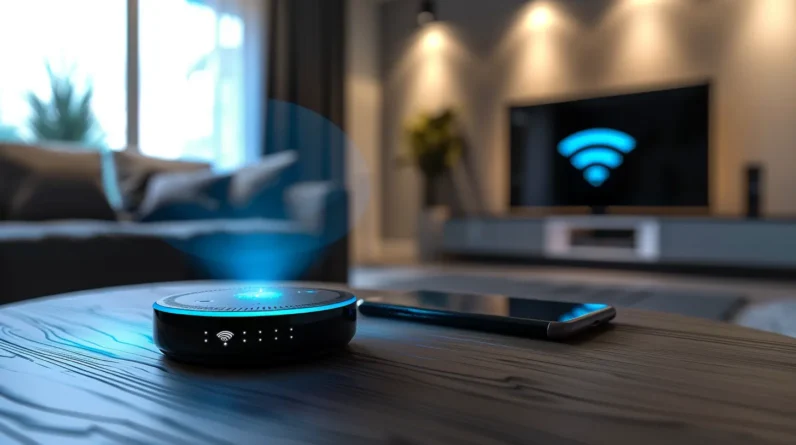
We evaluate the security features of leading smart home hubs to identify key vulnerabilities and strengths, providing homeowners with a thorough understanding of how to safeguard their smart home ecosystem. We’ll examine the security risks associated with smart home hubs, compare popular models, and discuss the importance of encryption methods, authentication protocols, and user controls. By understanding these key security features, we can guarantee a secure smart home experience and explore further measures to protect our homes and data.
Understanding Smart Home Hub Security Risks
Although smart home hubs offer unparalleled convenience and control over various devices, their interconnected nature makes them a prime target for cyber threats. We must consider the risks associated with these hubs, including data leakage and unauthorized access to sensitive information. To mitigate these risks, we need to conduct a thorough vulnerability assessment, identifying potential weaknesses and addressing them before they can be exploited. By understanding the security risks associated with smart home hubs, we can take steps to protect our devices, data, and homes from cyber threats, ensuring a secure and reliable smart home experience.
A Comparative Analysis of Popular Smart Home Hubs
As we explore the world of smart home hubs, it’s essential to examine the security features of popular models to determine which ones offer the most robust protection. We must analyze the smart home protocols used, such as Zigbee, Z-Wave, and Bluetooth, and assess device interoperability. Some hubs excel at integrating multiple protocols, while others prioritize ease of use. We’ll compare the security strengths and weaknesses of top models, including Samsung SmartThings, Wink Hub, and August Connect. By evaluating these factors, we can identify the most secure smart home hubs and make informed decisions about our home’s security.
Encryption Methods: What to Look for in a Secure Smart Home Hub
How do popular smart home hubs protect user data through encryption, and what methods should we look for when choosing a secure hub? We need to examine the encryption standards used to safeguard our sensitive information. When evaluating a hub’s encryption, we should check for:
1. AES-256 encryption: A widely accepted standard for secure communications.
2. End-to-end encryption: Guarantees that only authorized devices can access our data.
3. TLS/SSL protocols: Secure communication protocols that prevent eavesdropping and tampering.
Evaluating Authentication Protocols in Smart Home Hubs
To guarantee the security of our smart home hubs, we must also scrutinize the authentication protocols in place, which verify the identity of users, devices, and services. A robust authentication protocol should employ multi-factor authentication, combining something we understand (passwords), something we possess (tokens or smart cards), and something we are (biometric data). We must also enforce secure password policies, including password rotation, complexity requirements, and secure storage. By doing so, we minimize the risk of unauthorized access to our smart home hubs and guarantee the confidentiality, integrity, and availability of our data and services.
User Controls and Access Management in Smart Home Hubs
Now that we’ve established robust authentication protocols, we must guarantee that authorized users can exercise fine-grained control over their smart home hubs. Effective user controls and access management are vital in preventing unauthorized access and ensuring the security of the system.
Here’s what we need to take into account:
1. User Roles and Permissions: Assign specific roles with distinct permissions to control access to devices and features.
2. Access Logs and Auditing: Regularly review logs to track user activity and detect potential security breaches.
3. Secure Remote Access: Implement robust encryption and secure protocols for remote access to prevent interception and eavesdropping.
Integrating Third-Party Devices: Security Considerations and Best Practices
As we expand the capabilities of our smart home hubs by integrating third-party devices, we must affirm that these additions do not compromise the security of the entire system. To guarantee this, we need to carefully evaluate device compatibility and validate that the integrated devices meet our security standards. Regular security updates are also essential to prevent exploitation of vulnerabilities. We must prioritize secure communication protocols and encryption methods. By doing so, we can protect our smart home hubs and their connected devices from potential threats and maintain the integrity of our home automation systems. We also recommend monitoring for anomalies.
Conclusion
We’ve scrutinized the security features of leading smart home hubs, and the results are clear: some hubs are fortresses, while others are like unlatched doors, leaving homes vulnerable to cyber threats. To safeguard your smart home, prioritize hubs that employ robust encryption methods, multi-factor authentication, and granular user controls. By doing so, you’ll build a secure foundation for your connected devices, protecting your home and data from potential breaches.







